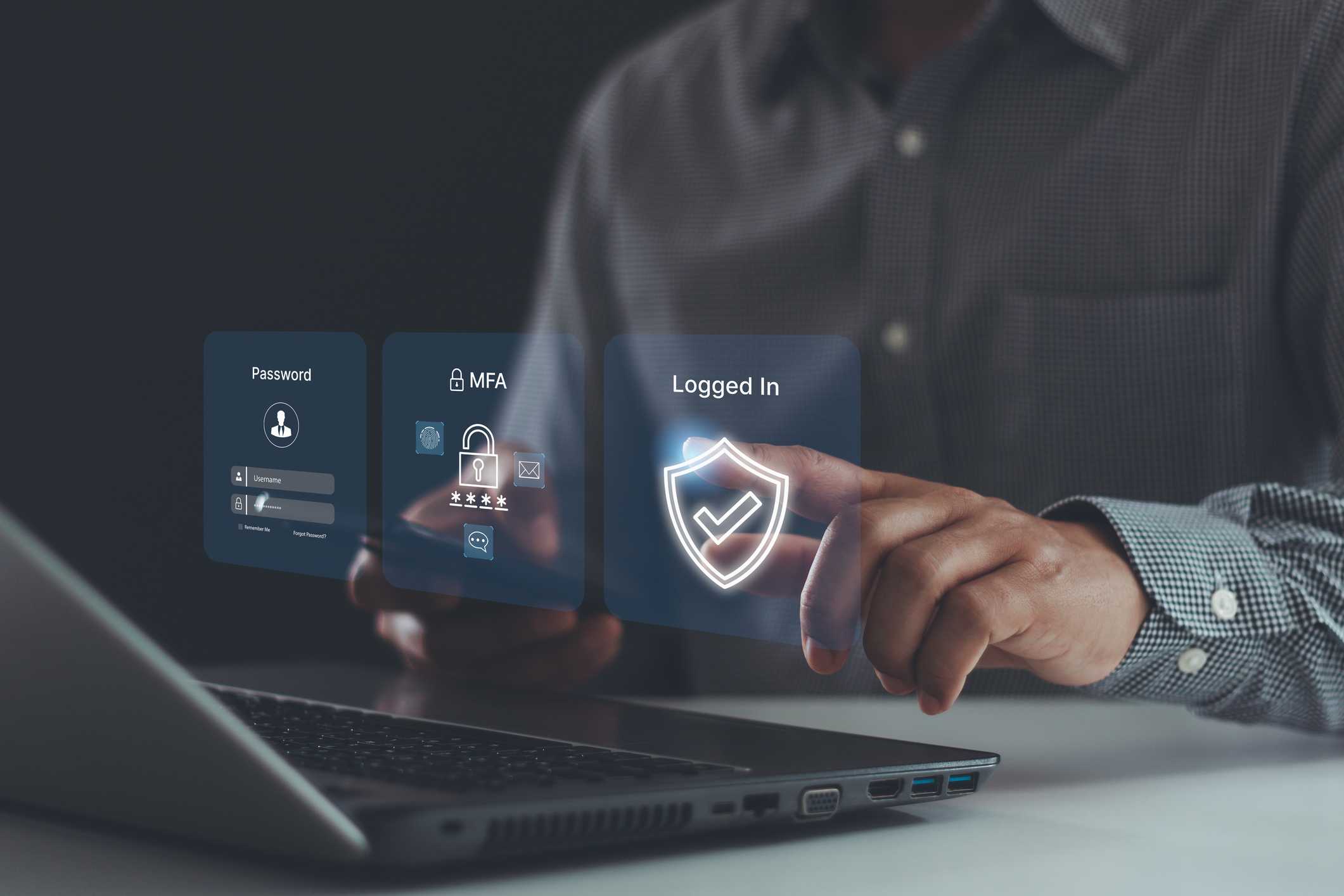The Role of Patch Management in Ransomware Prevention
Understanding the Cybersecurity Battlefield: The Rise of Ransomware Attacks
Ransomware attacks have inexorably shifted from a rare menace to a ubiquitous threat, impacting businesses regardless of size or industry. We recognize that in this digital age, the security breaches and downtime resulting from such attacks can spell severe financial and reputational losses. It is our mission to stay ahead of these threats by implementing robust defense strategies. With a proactive approach, bolstered by data from leading cybersecurity reports, we understand that ransomware’s relentless evolution calls for vigilant and continuous protection of our clients’ digital assets.
Patch Management Fundamentals: A Linchpin in IT Security
At the core of our defense strategy lies patch management, a critical IT security discipline that we prioritize to mitigate vulnerabilities. Patch management for ransomware defense is integral to securing systems and networks against the exploitation of outdated software. By staying abreast of the latest updates and rigorously applying patches, we aim to close any openings that could be leveraged by cyber adversaries. Our protocol is informed by best practices outlined in key IT and cybersecurity frameworks, ensuring that we maintain the highest standards of integrity and security in managing our clients’ IT infrastructure.
Why Patch Management is Key to Ransomware Prevention
Patch management for ransomware defense is not merely a routine IT task; it is a strategic imperative. The nexus between timely patching and the prevention of ransomware is underscored by experts who analyze breach incidents. Such analysis often reveals a common thread – the exploitation of unpatched systems. We take these insights seriously, integrating them into our operational ethos to ensure that our proactive measures align with the ever-changing landscape of cybersecurity threats. Our goal is to effectively shield our clients from ransomware, transforming patch management from a passive checklist item into a decisive shield against cyberattacks.
Patch Management for Ransomware Defense: How It Works
Proactive Vulnerability Identification
Our approach to patch management begins with the proactive identification of vulnerabilities within IT infrastructure. As part of our tailored IT services, we consistently scan and assess our clients’ environments to detect any weak points that could potentially be exploited by ransomware. By staying ahead of the curve, we ensure that emerging threats are addressed before they manifest into breaches.
Strategic Patch Deployment
Once vulnerabilities are identified, we prioritize and deploy patches in a systematic manner. We understand that not all patches are created equal, and our team is adept at determining which patches are critical for immediate action. Through a disciplined protocol, we optimize the timing and sequencing of updates to minimize disruption while maximizing protection.
Continuous Monitoring and Compliance
We recognize the importance of diligent oversight in patch management for ransomware defense. Our continuous monitoring systems are designed to verify the success of each patch installation, ensuring that all systems are up-to-date with the latest security measures. Additionally, our compliance with industry standards and best practices reflects our commitment to providing premium IT security services.
Vigilant Response and Adjustment
In the constantly evolving world of cybersecurity, we stay vigilant, ready to respond and adjust our patch management strategies in the face of new ransomware tactics. Should a patch prove insufficient or if a new threat emerges, our team quickly reacts with an appropriate response plan, ensuring that our clients’ defenses are robust and resilient against the unpredictable nature of cyber threats.
- Regular vulnerability assessments to identify areas at risk
- Strategic prioritization and patching of software and systems
- Continuous verification of patching procedures and protections
- Adaptation to emerging threats with rapid response capabilities
Did you know effective patch management can reduce the risk of ransomware attacks? It closes security gaps that hackers exploit to gain unauthorized access to systems.
Empowering Your Cyber Resilience: Patch Management for Ransomware Defense
In an era where digital threats constantly evolve, ensuring robust cybersecurity practices is not just a necessity but a fundamental responsibility. At Alvaka, we recognize that patch management for ransomware defense is an essential strategy within the comprehensive suite of services we offer. Awareness and prevention are the cornerstones of our approach to securing your business’s digital assets against the relentless threat of ransomware.
Commitment to Excellence with Patchworx
Our commitment to excellence is crystallized within our proprietary service, Patchworx, which is specifically designed to fortify your infrastructure by seamlessly applying the latest patches to your systems. We understand that the timely application of patches is a daunting task, but with our expertise, it becomes part of a streamlined and worry-free service.
Integrating Patch Management into Your Security Framework
By integrating patch management for ransomware defense into your security framework, we ensure that vulnerabilities are addressed promptly and efficiently. We pride ourselves in offering a service where vigilance is paired with technological precision, aiming to minimize the risk of ransomware attacks and bolstering your resilience against such infiltrations.
Alvaka’s patch management services represent more than just another layer of security; they are a testament to our dedication to protecting our clients. By partnering with us for patch management for ransomware defense, you are taking a proactive step towards securing your enterprise against the ever-present threats of the digital world. With Alvaka’s expertise and steadfast support, your business can continue to thrive, unimpeded by the fear of cyber intrusions.
FAQ
What is ransomware and why is it a significant threat to businesses? ▼
Ransomware is a type of malicious software designed to block access to a computer system or encrypt data until a sum of money is paid. It’s a significant threat to businesses because it can lead to data loss, operational downtime, and financial losses, among other impacts. By infiltrating networks and locking out users from their systems, ransomware can cripple business operations and compromise sensitive information.
How does patch management contribute to cybersecurity? ▼
Patch management is crucial in cybersecurity as it involves regularly updating systems and software with patches to address security vulnerabilities. By fixing these vulnerabilities, we can prevent attackers from exploiting them to gain unauthorized access to our systems, thus reducing the risk of cyber attacks, including ransomware.
What is the role of patch management in preventing ransomware attacks? ▼
The role of patch management in preventing ransomware attacks is to ensure that all security weaknesses known to vendors are quickly and effectively addressed. Since many ransomware attacks exploit known vulnerabilities, maintaining an up-to-date system through patch management significantly diminishes the risk of a successful ransomware breach.
Can regular patch management guarantee protection against ransomware? ▼
While regular patch management is a critical component in the defense against ransomware, it cannot guarantee absolute protection. However, it substantially increases our security posture and resilience against such threats. Implementing a robust patch management strategy alongside other cybersecurity measures enhances our overall network security.
How often should patch management be performed? ▼
Patch management should be an ongoing process, with patches applied as soon as the software vendors release them. While the frequency can vary based on the vendor’s schedule and the criticality of the patch, regular monthly updates, at a minimum, are recommended. However, for critical vulnerabilities, immediate action is warranted.
What challenges do organizations face with patch management? ▼
Organizations face several challenges with patch management, including the scale and complexity of their IT environments, the need to prioritize patches, and the potential for patch-related system disruptions. Additionally, ensuring that all endpoints are updated, including mobile and remote devices, adds another layer of complexity to effective patch management.
What steps can businesses take to improve their patch management procedures? ▼
Businesses can improve their patch management procedures by implementing automated patch management tools, developing a structured patch management policy, and regularly auditing and testing their patch management practices. Moreover, educating staff on the importance of updates and maintaining an inventory of all assets are crucial steps in improving the patching process.
How does Alvaka approach patch management? ▼
At Alvaka, we approach patch management with a proactive mindset. We use advanced tools and practices to monitor and deploy patches efficiently across client systems. Our process includes thorough testing of patches before deployment, prioritizing patches based on threat severity, and providing comprehensive reporting on patch status and system health.
Can small businesses benefit from outsourcing patch management? ▼
Small businesses can significantly benefit from outsourcing patch management. By leveraging the expertise and resources of specialized providers like Alvaka, they can ensure timely patching without the need to maintain in-house cybersecurity expertise, which can be both costly and complex to manage.
What measures complement patch management in a cybersecurity strategy? ▼
Measures that complement patch management in a comprehensive cybersecurity strategy include firewalls, intrusion detection and prevention systems, regular security audits, employee training, multi-factor authentication, data backups, and incident response planning. Implementing a layered security approach enhances our resilience against the ever-evolving threat landscape.







